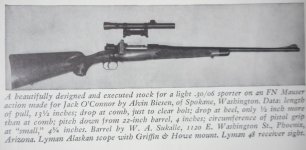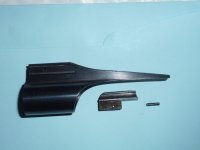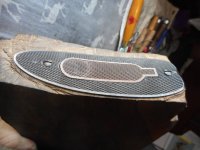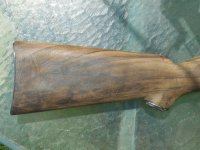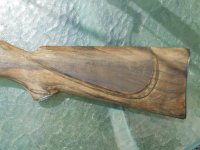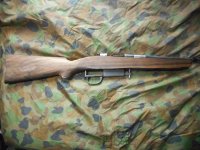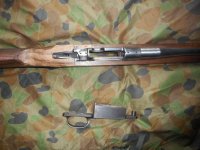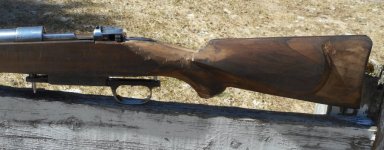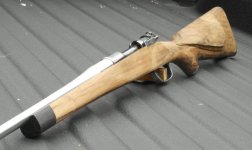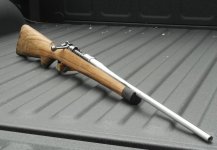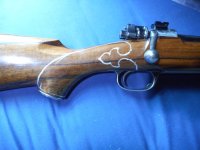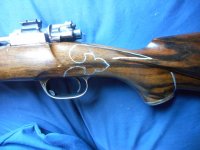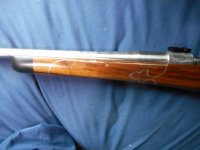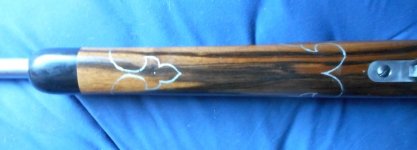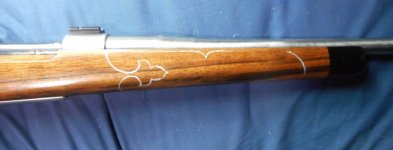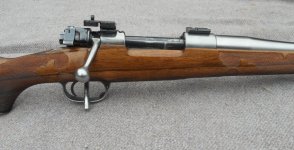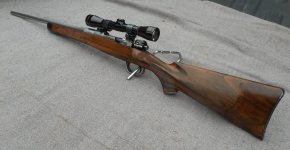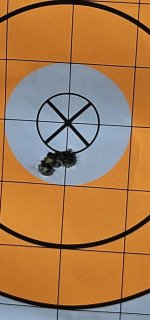This started as a mental exercise a few years ago, during the dark nights of winter. The "one rifle" concept has been beat to death, but I began thinking about the ideal rifle/cartridge combination. Also, I had been reading about the mountain men, and started speculating about what they would carry if they had access to modern firearms. Alternatively, if I could time-travel back, but take a modern rifle with me, what would it be?
The first problem was to narrow down the caliber. It would need to shoot flat for the plains and mountains, yet still be capable of cleanly dealing with heavier game, like moose, elk and bison. It would need to be capable of dealing with grizzlies, because, well, we all know what happened to Hugh Glass.
I love the 9.3x62, and I have a very good one, and its certainly capable of dealing the animals on the heavier/tougher end. Calling it flat shooting, however, might lead others to suspect that you're full of sh!t! I wouldn't use it anywhere where I wasn't confident of getting to within 250 yds, or at the most 300.
On the other hand, I also happen to have a very nice little 7x57. It certainly fills the flat shooting requirement. It runs a close race with the .270, and I doubt there is any practical difference in performance on game. This is also why I discounted the slightly larger 7mm's, like the .280 or 7x64. The jump in performance is so slight that there's little point owning one if you already have a good 7x57.
What really disqualifies the 7mm and the .270 is their suitability for the largest game. Taking it out of the fantasy realm, if you want to hunt bison most places with a season have minimum caliber requirements and these two don't come up to snuff.
That leaves the .30's, the .338's, and maybe the .35's. I wanted to stay away from belted magnums for a couple of reasons, one being magazine capacity. I wanted the full 5-round capacity without messing around with extended drop magazines. Using a standard case the .35 Whelen suffers the same shortcomings as the 9.3mm. and the .338 is so close to a .30 with the same case capacity, that I could never see the point.
So through process of elimination, I settled on the boring, ubiquitous .30/06. Original, I know...
I had also read J.D. Jones' book, the name of which escapes me at the moment, but he also used a .30/06 and shot every game species in North America with it. He settled on two bullet weights, a 165 gr and a 200 gr. I think that makes sense. The 165 is flat shooting and can handle anything up to elk; then the 200's can take over and still be decently flat-shooting.
Caliber settled, it was time to design the rifle. There were only two real contenders for the action design, the pre '64 Model 70 and the Mauser 98. I've been a Mauser fan since I first started reading about rifles, so that part was easy. The best Mauser 98 actions, in my opinion, were the pre-war commercial sporters, and the Mauser Werke made a special one expressly for the .30/06. A donor rifle fell into my hands through one of the gun auctions.
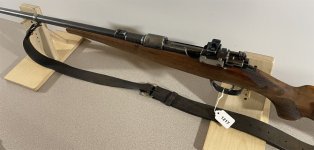
This particular rifle had had a hard life. The bore had been neglected, and the stock repaired, so that eased my conscience about stripping down a vintage collectible sporter for the action. Then I had to acquire all the little bits and pieces.
The stock came from Prophet River, a medium grade of NZ walnut.
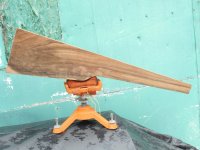
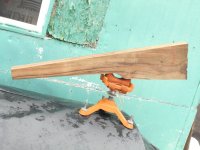
The new barrel was a Shilen blank, picked up from a fellow nutter
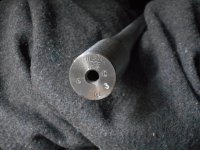
The first problem was to narrow down the caliber. It would need to shoot flat for the plains and mountains, yet still be capable of cleanly dealing with heavier game, like moose, elk and bison. It would need to be capable of dealing with grizzlies, because, well, we all know what happened to Hugh Glass.
I love the 9.3x62, and I have a very good one, and its certainly capable of dealing the animals on the heavier/tougher end. Calling it flat shooting, however, might lead others to suspect that you're full of sh!t! I wouldn't use it anywhere where I wasn't confident of getting to within 250 yds, or at the most 300.
On the other hand, I also happen to have a very nice little 7x57. It certainly fills the flat shooting requirement. It runs a close race with the .270, and I doubt there is any practical difference in performance on game. This is also why I discounted the slightly larger 7mm's, like the .280 or 7x64. The jump in performance is so slight that there's little point owning one if you already have a good 7x57.
What really disqualifies the 7mm and the .270 is their suitability for the largest game. Taking it out of the fantasy realm, if you want to hunt bison most places with a season have minimum caliber requirements and these two don't come up to snuff.
That leaves the .30's, the .338's, and maybe the .35's. I wanted to stay away from belted magnums for a couple of reasons, one being magazine capacity. I wanted the full 5-round capacity without messing around with extended drop magazines. Using a standard case the .35 Whelen suffers the same shortcomings as the 9.3mm. and the .338 is so close to a .30 with the same case capacity, that I could never see the point.
So through process of elimination, I settled on the boring, ubiquitous .30/06. Original, I know...
I had also read J.D. Jones' book, the name of which escapes me at the moment, but he also used a .30/06 and shot every game species in North America with it. He settled on two bullet weights, a 165 gr and a 200 gr. I think that makes sense. The 165 is flat shooting and can handle anything up to elk; then the 200's can take over and still be decently flat-shooting.
Caliber settled, it was time to design the rifle. There were only two real contenders for the action design, the pre '64 Model 70 and the Mauser 98. I've been a Mauser fan since I first started reading about rifles, so that part was easy. The best Mauser 98 actions, in my opinion, were the pre-war commercial sporters, and the Mauser Werke made a special one expressly for the .30/06. A donor rifle fell into my hands through one of the gun auctions.

This particular rifle had had a hard life. The bore had been neglected, and the stock repaired, so that eased my conscience about stripping down a vintage collectible sporter for the action. Then I had to acquire all the little bits and pieces.
The stock came from Prophet River, a medium grade of NZ walnut.


The new barrel was a Shilen blank, picked up from a fellow nutter
















































